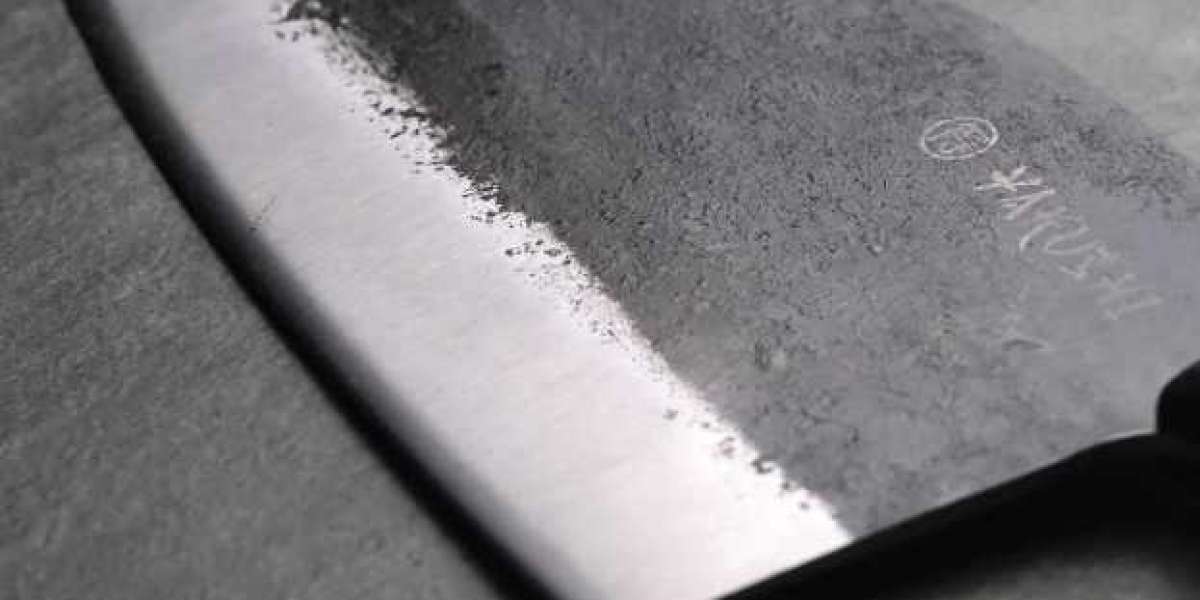Among the diverse array of chef knives available, the Serbian chef knife stands out for its unique design and exceptional cutting capabilities. In this blog post, we will delve into the art of using a Serbian chef knife, exploring various techniques and offering valuable tips to help you harness its potential to elevate your cooking experience.
Understanding the Anatomy of a Serbian Chef Knife
Before we dive into the techniques, it's essential to understand the components of a Serbian chef knife. These knives typically feature a distinctive curved blade designed to provide a rocking motion while chopping. The blade is made of high-quality stainless steel, renowned for its sharpness and durability. The handle is often crafted from materials like wood or horn, offering a comfortable grip for precise control.
Techniques for Efficient Usage
Rocking Motion Technique: The curved blade of a Serbian chef knife lends itself perfectly to the rocking motion technique. Rest the tip of the knife on the cutting board and pivot the knife back and forth, letting the blade's curvature do the work. This technique is ideal for chopping herbs, garlic, and onions.
Slice and Lift Technique: For slicing vegetables and meats, employ the slice and lift technique. Position the knife at an angle and slice through the ingredients, simultaneously lifting the blade slightly at the end of each cut. This technique ensures cleaner cuts and helps maintain the ingredient's texture.
Precision Dicing Technique: Achieve uniform dice by using the precision dicing technique. Make parallel cuts through the ingredients without completely separating them. Then, rotate the ingredients and make perpendicular cuts. The result is neat, evenly-sized cubes for your dishes.
Julienne Technique: To create fine strips known as julienne cuts, start by making a flat surface on the ingredient. Then, cut it into thin slices, and finally, stack the slices and cut them into fine strips. This technique is ideal for garnishes and salads.
Chiffonade Technique: Employ the chiffonade technique for delicate leafy greens or herbs. Roll the leaves firmly, stack them, then cut them into thin strips. You'll end up with elegant, ribbon-like strips that add visual appeal to your dishes.
Tips for Proper Knife Handling
Maintain Sharpness: Cutting with a sharp knife is easier and faster. Regularly sharpen your classic chef knife using a honing rod or sharpening stone. Remember to maintain a consistent angle while sharpening to preserve the blade's edge.
Proper Grip: Hold the handle with a firm but not tight grip. Ensure your fingers are wrapped around the handle for control and your thumb rests on the side of the blade for guidance.
Safe Cutting Surface: Always use a stable and non-slip cutting board to prevent accidents and ensure steady cuts. Wooden or plastic boards are recommended to prevent dulling the knife's edge.
Avoid Twisting and Prying: While the Serbian chef knife is robust, avoid using it for tasks that require twisting, prying, or hitting bones. These actions can cause the blade to chip or break.
Frequent Cleaning: Clean the knife immediately after use to prevent food residue from accumulating on the blade. Hand wash the knife with mild soap and warm water, avoiding harsh abrasives that can damage the blade.
Storage and Protection: Store your Serbian chef knife in a knife block or magnetic strip to prevent damage and maintain its edge. Avoid placing it in a drawer with other utensils, as this can lead to nicks and dulling.
The Bottom Line
By employing the techniques and tips outlined in this blog post, you'll enhance your cooking skills and develop a deeper appreciation for the craftsmanship that goes into every Serbian chef knife.








